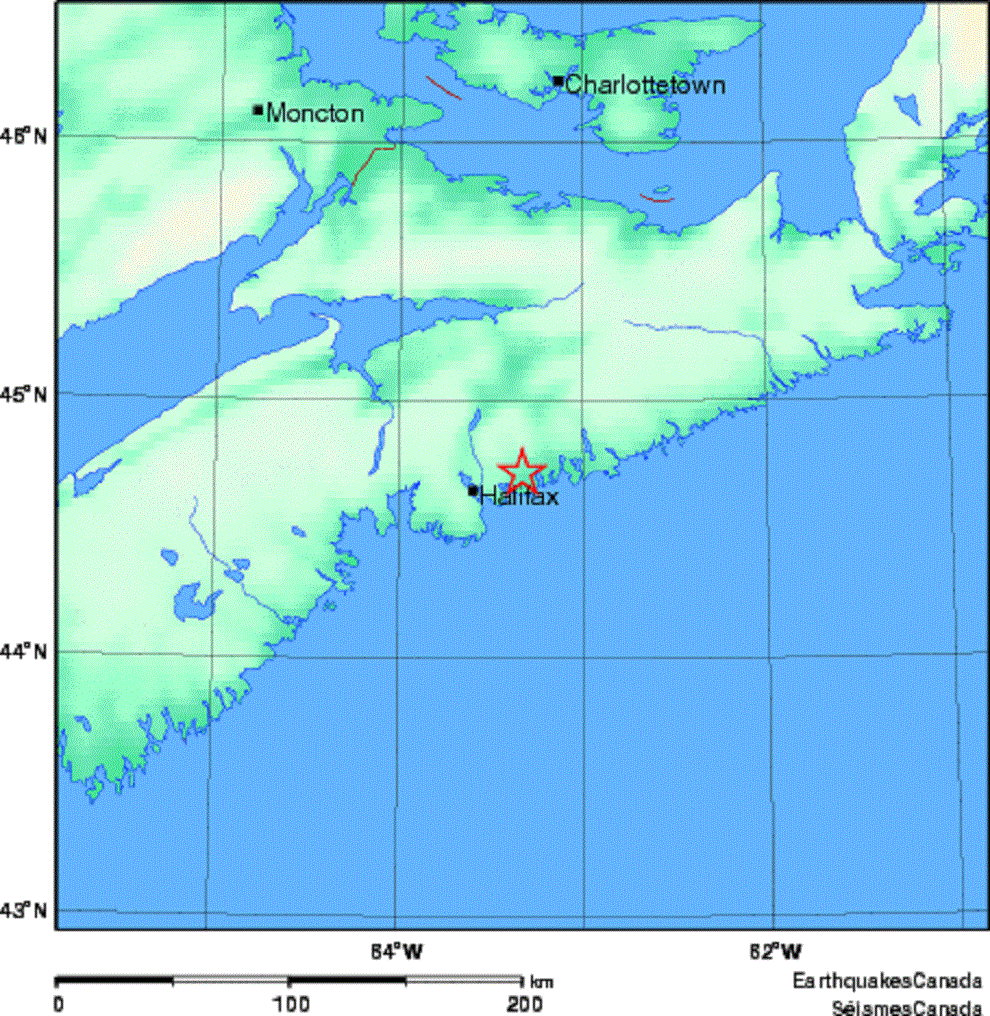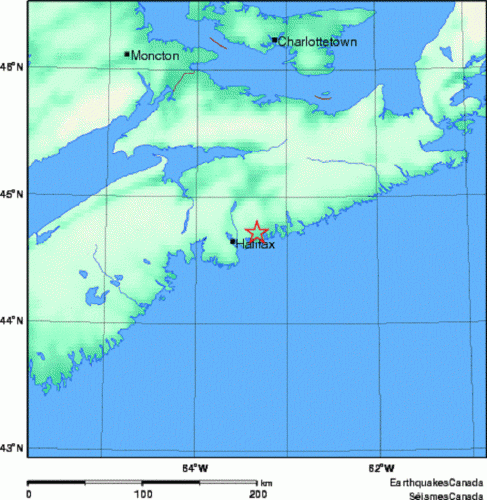Weather
Since when does Nova Scotia have earthquakes?
Earthquake happens, few notice

caption
An earthquake occurred 14 kilometres east of Halifax January 12.
caption
An earthquake occurred 14 kilometres east of Halifax January 12.Think of earthquakes. San Francisco. British Columbia. But what about the east coast?
On Thursday, Jan. 12, 2017, a 2.7 magnitude earthquake occurred near Porter’s Lake five kilometres below the surface. The quake was hardly noticeable to residents.
Nearby Seaforth resident Tonya MacPhail felt the earthquake, hearing what she described as “a loud thump outside.” The quake didn’t damage her property, which is typical of earthquakes of such low magnitude.
“I kinda forgot about it,” she says through Facebook. “It only lasted a few seconds. Then when I went on Facebook later all my neighbours were talking about it. That’s how I found out it was an earthquake.”
Kim Stewart also lives in Seaforth. She was home sick that day, and when she heard the quake, her first thought was that it was thunder. Then, she thought her furnace was about to explode.
“I went from laying down sick in bed to sitting up scared for my life,” she says. “The adrenaline made me feel better though.”
Thankfully, these minor quakes are nothing to worry about. According to Natural Resources Canada, an earthquake under magnitude five is unlikely to cause damage. “Magnitude” refers to the amount of energy released by the event. Earthquakes of this strength happen up to 30,000 times per year around the world.
Andrew MacRae is an assistant geology professor at Saint Mary’s University. In an email, he explains how this can happen in an area outside of a major fault line.
He says even though Nova Scotia is far from major faults, “there is no place on earth where the frequency of earthquakes is genuinely zero.” Faults, which are the boundaries of plates of the earth’s crust, are both more likely to have earthquakes in general, and those earthquakes are likely to be far more intense.
MacRae says Canada is a special case in one way, though.
“One additional wrinkle in Canada versus other parts of the world is geologically recent changes in the weight on the crust and lithosphere of the Earth,” he says.
The lithosphere is the outermost rocky layer of a planet.
“Specifically, if you were here in Halifax 20,000 years ago we would be beneath considerable amounts of glacial ice … the process of glacial rebound is the most likely cause for this and other earthquakes in the province,” says MacRae.
That is to say, earthquakes in this region are usually caused by the release of pressure the lithosphere was under at a time when a kilometre of ice covered Canada.
If you’re afraid that things like fracking or mining is causing seismic activity, like reports have found to happen in Oklahoma, MacRae can put your fears to rest.
“At five kilometres down this is a natural event, assuming the location of the event is accurately determined,” he says.
Meanwhile, MacPhail and Stewart aren’t alone in in their experience of underwhelming seismic activity — it’s the only kind that happens here on a regular basis.
Learn more about the geologic activity that we have the privilege to joke about (and not take as a serious threat to our survival) with this handy timeline.

